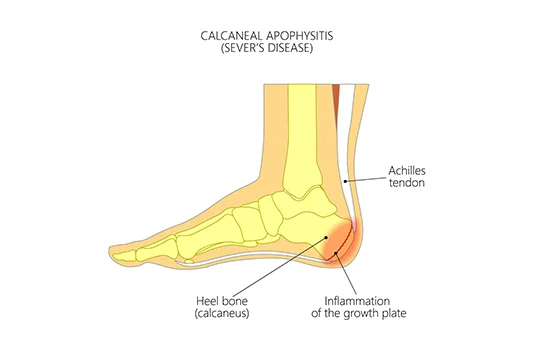
Getting Back Into Running
Senior Podiatrist Ash Howe On Getting Back Into Running

With the arrival of the New Year, it’s a favourite time for some half marathon resolutions or wanting to burn some of the calories gained over the festive season. So, I wanted to cover some simple tips to help reduce the risk of injury from running. Whether you’re running for the first time or someone returning to running after an extended break, these tips will benefit all experience levels. The 3 main things to be aware of for me personally are strengthening, appropriate footwear and a progressive run program.
Strengthening
Sport specific exercises on your non-run days are an important factor in building up the capacity of your tendons and muscles to handle the loads (running) placed on them. A lot of the running related injuries I see can be boiled down to the loads we placed on our muscles and tendons exceeded their capacity. Commonly referred to as ‘too much, too soon with too little rest’. Running alone can also build up lower limb strength gradually but that process takes time and many runners will attest that running performance and recovery can be improved by addressing existing strength deficits.
I addressed some of my go to lower limb strength exercises for the uninjured runner in a previous blog. https://www.feetinmotion.co.uk/blog/ashs-top-5-exercises-prevent-injury-risk/
On stretching, I am regularly asked about this in relation to running and injury. The current research does not support static stretching reducing injury risk in runners. However, for some there is a real neural (feeling) benefit to stretching. It feels good to stretch pre and post exercise, like scratching an itch. For those I advised to continue to stretch as it won’t do harm. For those who don’t enjoy stretching I advise that it isn’t necessary for running.

Appropriate footwear
Over the last few decades, running has become one of the most popular sports in the world due to the low barrier to entry. Anybody can go outside and run. One thing needed is footwear and we now have numerous running specific shoes to choose from. There are lots of factors that go in to choosing a shoe that’s right for you. Firstly, you need to find something that is comfortable. So I recommend going into a store and trying them on. If it’s too narrow, or heavy or doesn’t quite fit right it will potentially alter how you run naturally and put you at risk of an injury. Secondly, it needs to be terrain specific. Don’t use a road running shoe on the trails as it won’t have the tread or ankle support you will need to prevent injury. Thirdly, it should have features that address any existing issues. For example, a shoe with a higher heel can reduce loads on the ankle or a forefoot rocker can lower pressure across the big toe or ball of foot. A larger person and/or a more mobile foot I would recommend a more supportive stability shoe over a neutral. Finally, if you already have an insole addressing certain issues you will want to make sure it fits the foot and shoe correctly.

Progressive run program
As I mentioned earlier, too much too soon is a common factor in running injuries. A great way to give the body time to adapt so we can run for further, faster or for longer is to increase at a gradual rate over time. I am a big fan of run-walk programs that have become more popular over the years with the ‘Couch to 5k’ type plans. They involve running for a certain period, with that time being split up between periods of running and walking. For example, starting at 1 min run and 3 min walk for 40 minutes and over a 6-8 week period build up to 9 min run 1 min walk over 60 minutes. These plans have been integrated into apps, podcasts or timetables so easily accessible for all. I recommend these for new runners and experienced runners returning from injury. It removes the risk of miscalculating your ability to handle the loads and overdoing it. You can feel confident that you are giving yourself the best chance to build up a fitness base and giving your body enough time to adapt and recover.
I hope this helps give you some tools to get the most out your running experience without sitting on the side lines with nagging injuries. This advice is of a general nature for the uninjured population. If you have an injury or need more individual tailored advice, we recommend an assessment by a HCPC registered podiatrist.
Need help with your injury?
Click the button below to book an appointment with one of our HCPC Registered Podiatrists today!
Customer support
If you have any questions or need further assistance, we’re here to help. Feel free to reach out through our contact form or give us a call. Our dedicated team is ready to provide you with the support and information you need. Whether you're looking to book an appointment or have specific queries, don’t hesitate to get in touch.
Contact information
Official partners



